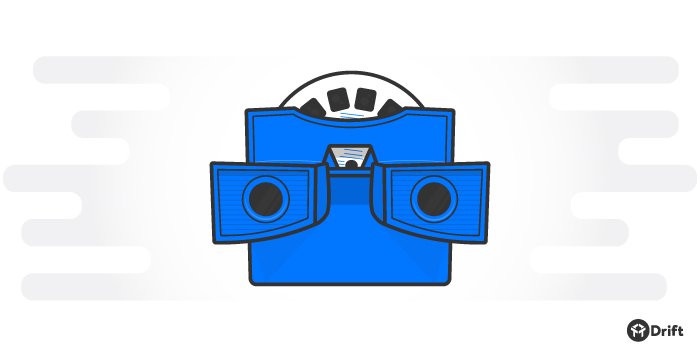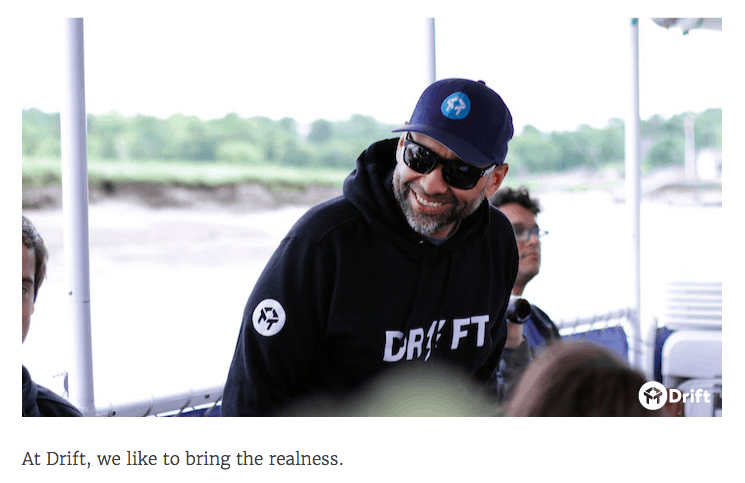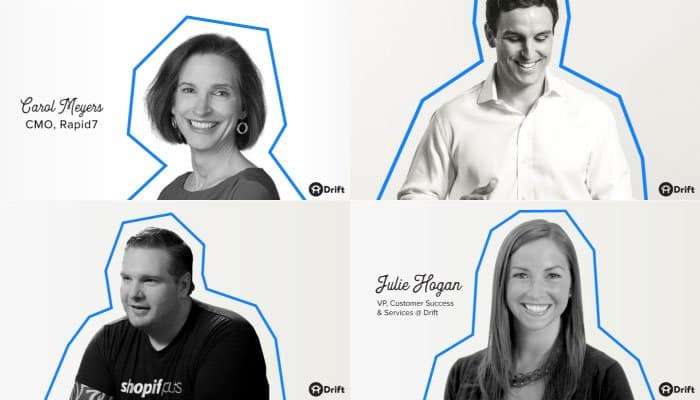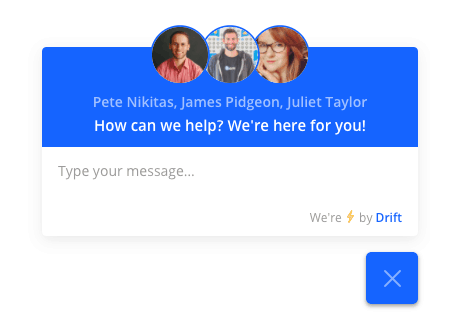
When I first started writing for the Drift blog, way back in May of 2016, our blog images had an aesthetic that could best be described as “cartoony.”
Like many other SaaS companies were doing, we were illustrating all of the images for our content.
For example, last year when our director of marketing Dave Gerhardt wrote about three ways you can use messaging to sell more over the holidays, I designed this image in Adobe Illustrator:

And then there was that time I wrote about account-based marketing (ABM) campaigns, and how one company was giving away View-Masters…
I mean, I sort of had to illustrate a View-Master for that post, right?

But here’s the thing:
While those blog images could be fun and whimsical, there was really nothing distinctively “Drift” about them. They were images that any other brand could easily recreate, and they didn’t really reflect one of our core brand values, which is being human.
So, what were the alternatives?
Stock photos, of course, have always been a popular choice. But when you use stock photos on your blog, you run into the same issue: Those images aren’t personal to your brand.
And arguably, using stock photos is worse than using custom illustrations, since you end up having a bunch of strangers being the face of your brand — as opposed to actual employees and customers.
The Solution: Use Custom Photos on Your Blog (Not Illustrations or Stock Photos)
At Drift, we want all of our marketing to feel like you’re talking to a trusted friend. After all, communication and connecting people are at the core of what we’re building here.
With our cartoony images, that sentiment just really wasn’t coming through.
Then in June of 2017, our CEO David Cancel hit on something. He realized that the key to bringing the Drift brand to life was simple:
We needed to start using real photos — photos that we took. He cited a blog post from Gary Vaynerchuk as an example:

So on June 20th, 2017, we officially flipped the switch.
That’s when we published our first post using the new header image style.

☝️ And yes, the opening line of that post definitely aligned with what we were trying to do.
We were trying to bring the realness with our images — to put authentic, human faces to the Drift brand.
After that first post was published, there was no looking back.
Whether they were photos from events we hosted, or photos from team outings, or just photos of us working in the office, we gathered up all of the photos we had and started using them on the blog.
For example, here’s a photo from our first-annual HYPERGROWTH conference, which we used for a blog post about our sales pitch:

And here’s a photo from a team outing we went on, which I used for a blog post that explains how Drift Playbooks work:

And finally, here’s a photo from around the office, which I used for a post that highlights the results we’ve seen after replacing lead forms with conversations:

Now, to be fair, we don’t always use original photos in every blog post we publish.
For example, I’ve started writing a series of posts where we share tips from the influential people we’ve interviewed (like Rapid7 CMO Carol Meyers, and Sequoia Capital partner Pat Grady).
In those cases, I’ll often pull from their LinkedIn profiles to make sure I’m using the best photos of them possible. And to really brand those posts as a series, I’ve started giving them the same, specific design treatment (black & white with blue outlines — see below).

Ultimately, with all of the photos we use on the Drift blog, and throughout all of our content, we try to stick to the following rule:
Always. Use. Faces.
That’s really the bread and butter behind making your brand feel more human.
Here’s why it’s so important…
The Psychology of Faces

Compared to other members of the animal kingdom, human beings are able to display an insanely wide range of facial expressions.
And that’s because for thousands and thousands of years, faces have been integral to how we communicate.
To quote an article published in Psychology Today:
More than any other species, humans look at each other’s faces, especially when we are in communication. Watch other animals when they see each other and interact. None of them pay as much attention to faces as we do.
So if you’re looking to make your brand feel more human, adding more faces is a great place to start. And that’s true for your marketing as well as for your product.

For example, at Drift, one of the earliest decisions we made when it came to our messaging product was that it needed to feature the actual faces of the people you’d be chatting with. Because without seeing someone’s face, it’s hard to feel that human connection.
Final Thought
As our team continues to grow, and customer tastes continue to evolve, the way we approach branding and the images we use for our content will inevitably change as well.
But for now, we just wanted to share these lessons we’ve learned for humanizing our brand.
If you have suggestions and tips of your own, please feel free to share them in the comments section below.
Thanks for reading!



